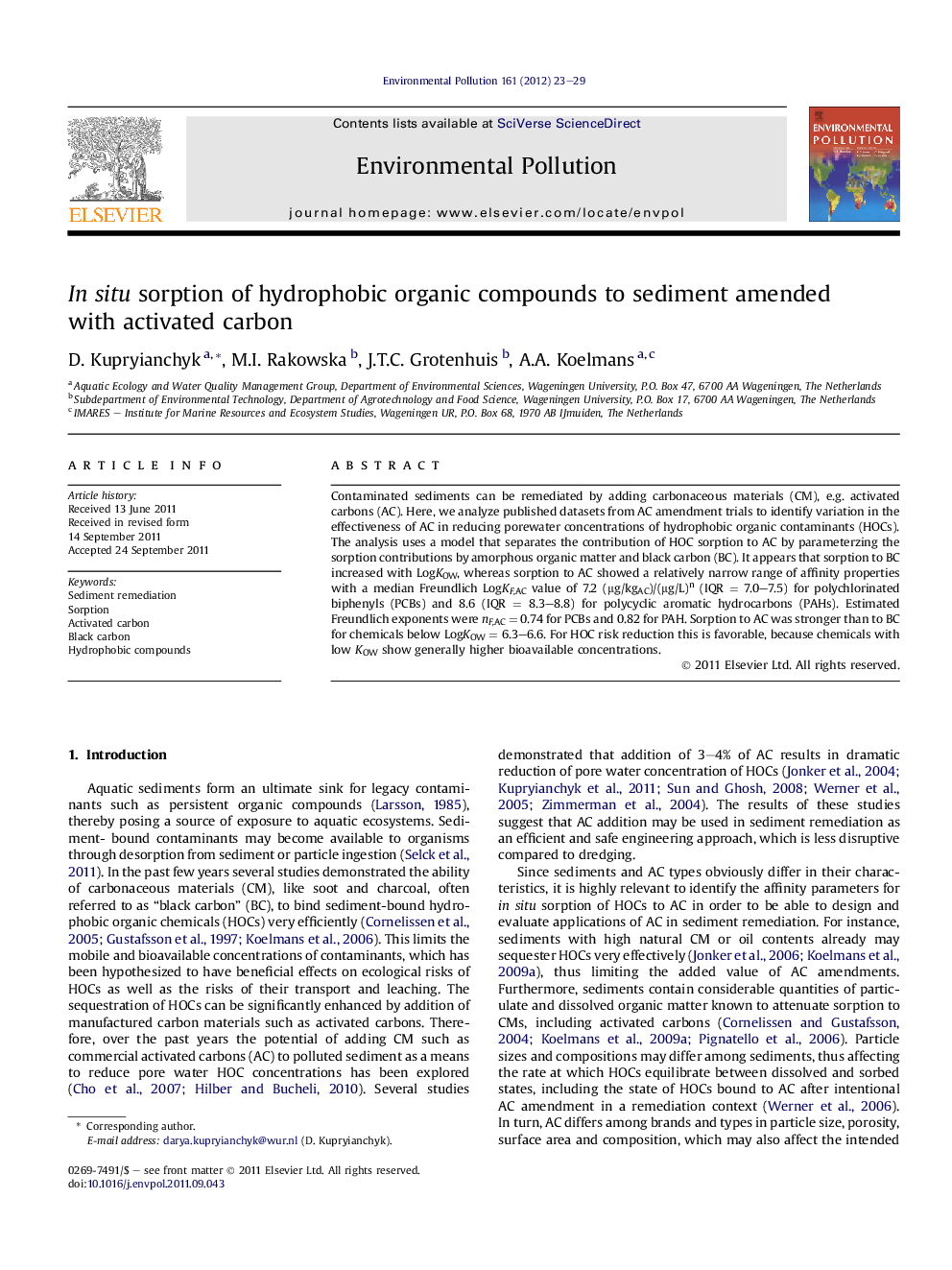| Article ID | Journal | Published Year | Pages | File Type |
|---|---|---|---|---|
| 4425098 | Environmental Pollution | 2012 | 7 Pages |
Contaminated sediments can be remediated by adding carbonaceous materials (CM), e.g. activated carbons (AC). Here, we analyze published datasets from AC amendment trials to identify variation in the effectiveness of AC in reducing porewater concentrations of hydrophobic organic contaminants (HOCs). The analysis uses a model that separates the contribution of HOC sorption to AC by parameterzing the sorption contributions by amorphous organic matter and black carbon (BC). It appears that sorption to BC increased with LogKOW, whereas sorption to AC showed a relatively narrow range of affinity properties with a median Freundlich LogKF,AC value of 7.2 (μg/kgAC)/(μg/L)n (IQR = 7.0–7.5) for polychlorinated biphenyls (PCBs) and 8.6 (IQR = 8.3–8.8) for polycyclic aromatic hydrocarbons (PAHs). Estimated Freundlich exponents were nF,AC = 0.74 for PCBs and 0.82 for PAH. Sorption to AC was stronger than to BC for chemicals below LogKOW = 6.3–6.6. For HOC risk reduction this is favorable, because chemicals with low KOW show generally higher bioavailable concentrations.
► We provide a conceptual framework to assess affinity constants for HOC sorption to CM. ► We determined the affinity parameters for HOC sorption to BC and AC. ► HOC sorption to AC showed a narrow range of AC affinity properties. ► HOC sorption to AC was stronger than to BC for chemicals below LogKOW = 6.3–6.6. ► 1% of AC appears to be sufficient to reduce pore water concentration by 99%.
